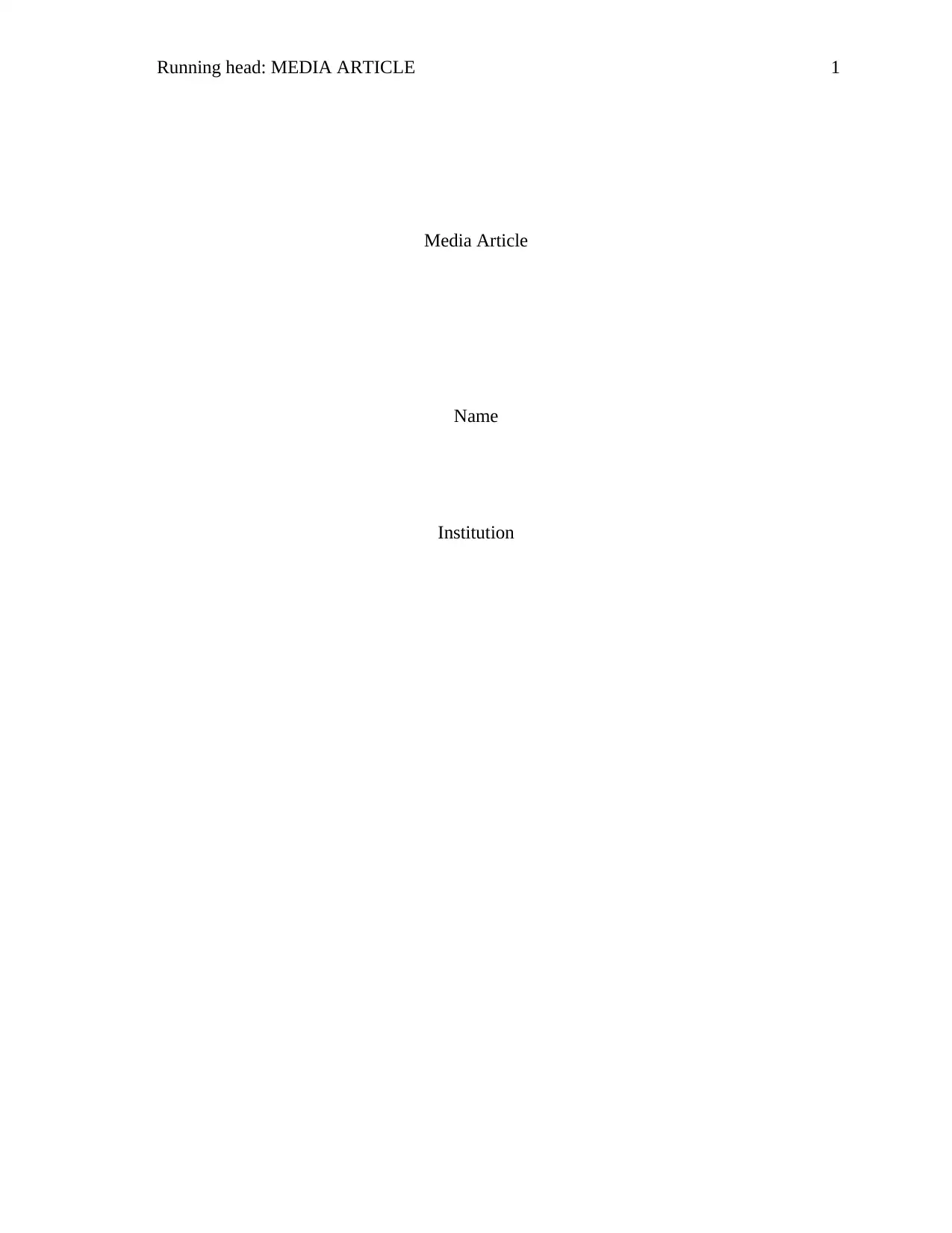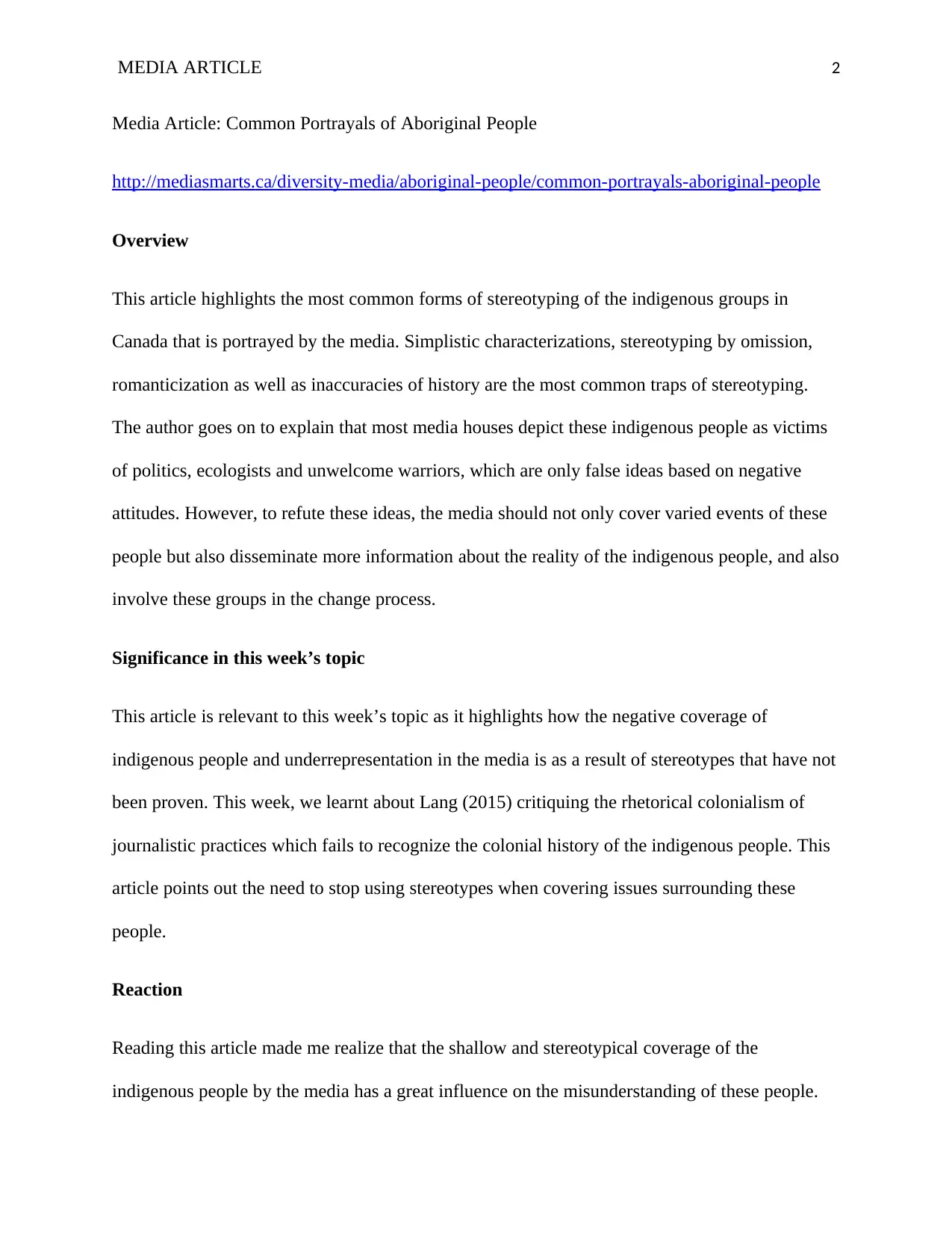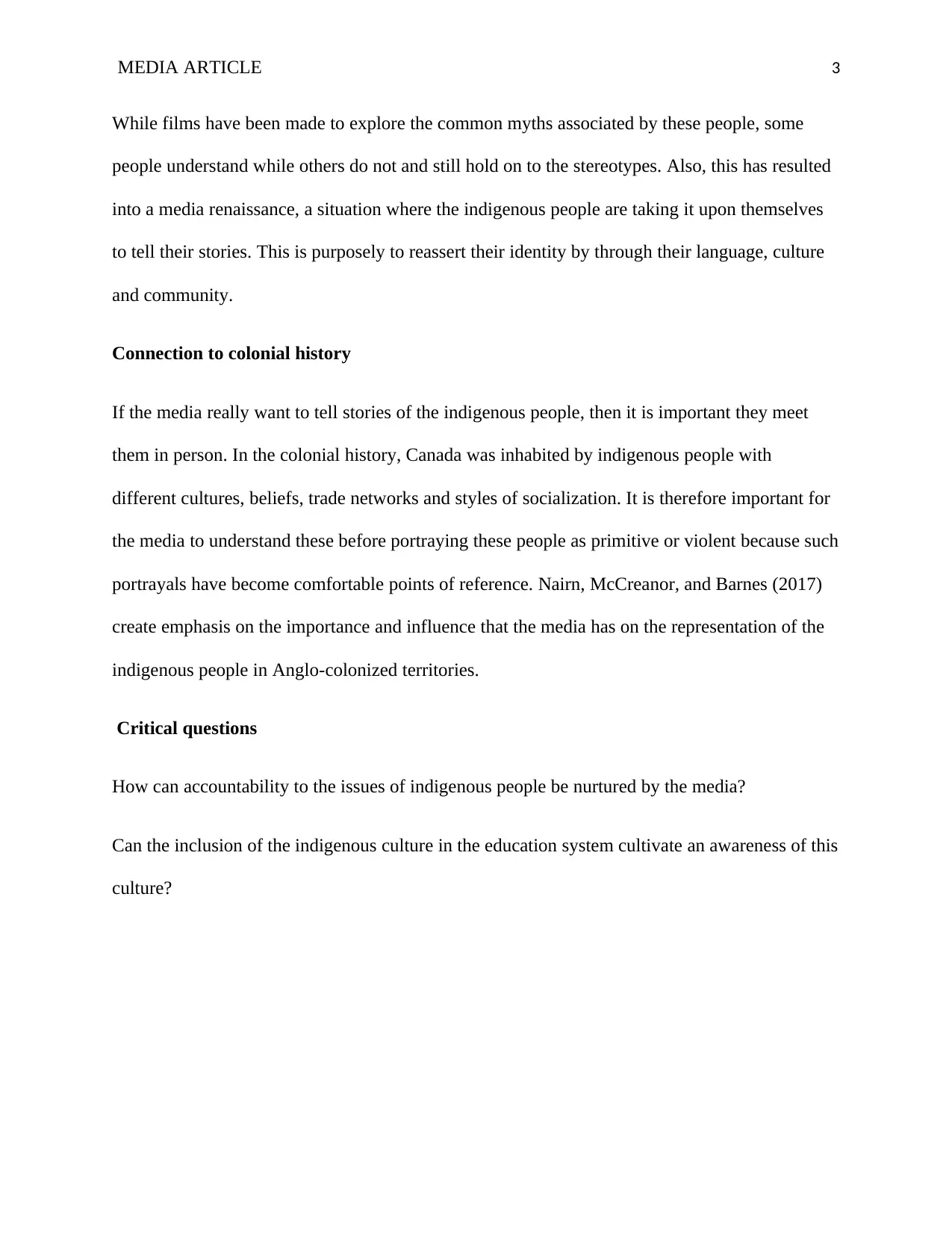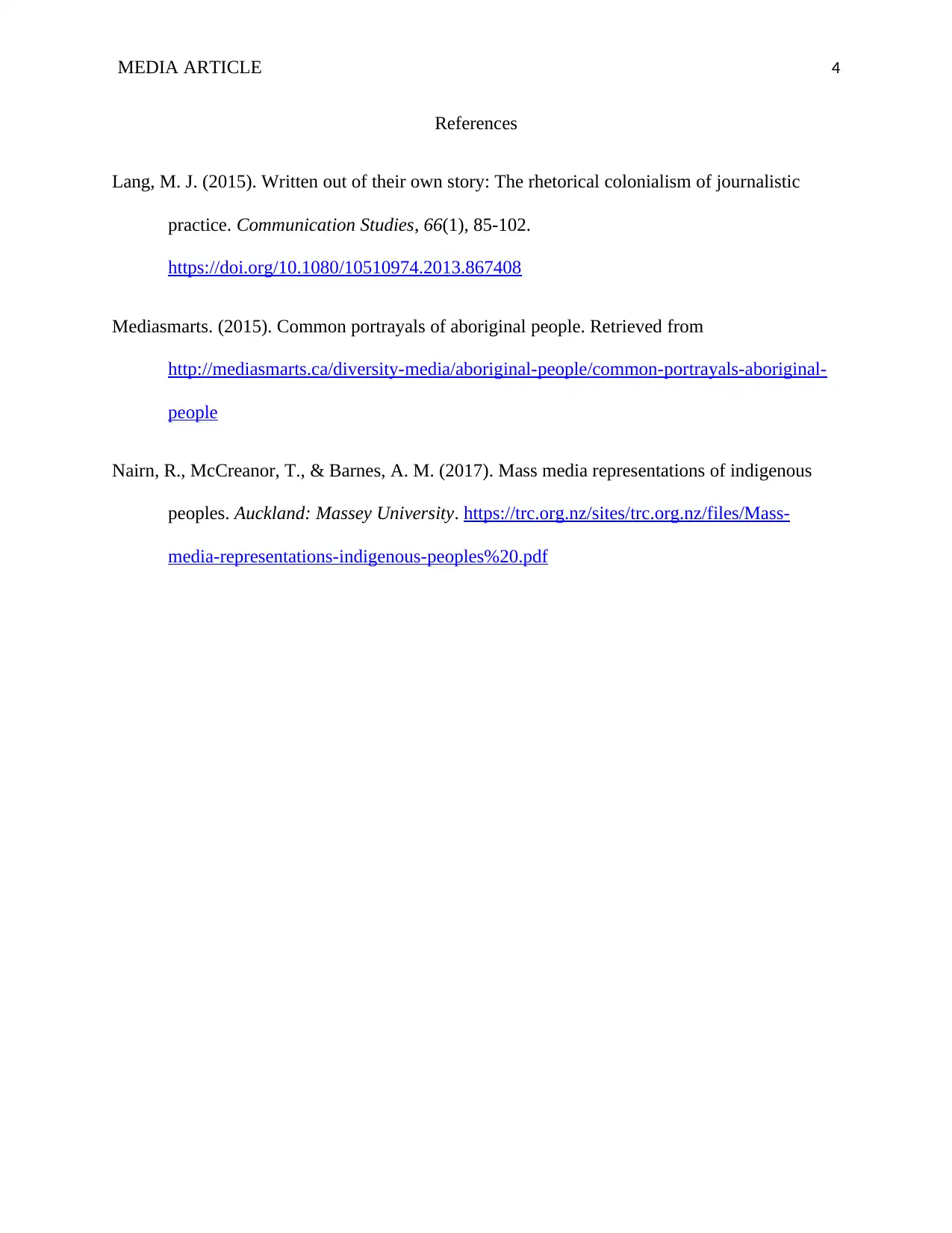Media Article Analysis: Portrayals of Aboriginal People in Media
VerifiedAdded on 2022/10/11
|4
|569
|12
Report
AI Summary
This report analyzes a media article focusing on the common portrayals of Aboriginal people, highlighting the stereotypes presented in the media. The article discusses simplistic characterizations, stereotyping by omission, romanticization, and historical inaccuracies. It examines how media often depicts indigenous people as victims, ecologists, or unwelcome warriors, which are false ideas based on negative attitudes. The report connects the article to the week's topic, which critiques the rhetorical colonialism of journalistic practices. The author emphasizes the need to stop using stereotypes when covering issues surrounding these people and suggests that the media should involve indigenous groups in the change process to accurately represent their identity. The report also highlights the importance of understanding the colonial history of Canada and the diverse cultures of indigenous people to avoid perpetuating harmful stereotypes.
1 out of 4







![[object Object]](/_next/static/media/star-bottom.7253800d.svg)